"I thought I was going crazy."
That's what Sarah posted on Apple's community forum after her new Apple Watch Series 3 started causing mysterious wrist pain. The aching wasn't from a tight band or skin irritation - it was something deeper. Something that radiated up her arm and only stopped when she removed the watch for hours at a time.
She wasn't alone. That single forum thread collected over 300 comments from users experiencing the same unexplained discomfort. Google "Apple Watch wrist pain" and you'll find over 10 million results.
Most articles blame band tightness, allergic reactions, or poor ergonomics. But there's another factor that almost no one is discussing – one that a New York Times journalist flagged back in 2015, and one that scientists are now taking increasingly seriously.
The Wrist Pain Mystery: When Nothing Makes Sense
The typical Apple Watch wrist pain doesn't follow the usual patterns of repetitive strain or contact dermatitis:
The band isn't too tight. Users report proper fit with no pressure marks or circulation issues.
There's no visible skin reaction. No rash, no irritation, no allergic response.
The pain is deep and neurogenic. It's described as an aching sensation that radiates up the arm - more nerve-related than muscular.
Standard fixes don't work. Switching wrists, adjusting the band, disabling the heart rate monitor, reducing haptics - none of these typical solutions provide relief.
The pain stops when the watch comes off. Within hours of removal, the discomfort disappears. Put it back on, and within an hour, it returns.
Sarah tried everything: wearing it on the opposite arm, flipping the watch to different surfaces of her wrist, even taking ibuprofen to manage the discomfort. Nothing worked except one thing - removing the watch entirely. "I am so sad that I cannot wear my high-tech iWatch 3" she wrote.
What could explain this pattern of symptoms?
Your Smartwatch Is a Miniature Radio Tower
The Apple Watch is an engineering marvel. It contains Bluetooth radios, Wi-Fi antennas, and cellular transmitters – all packed into a device that sits directly against your skin for up to 24 hours a day.
Unlike your iPhone, which you can set down, your Apple Watch maintains constant contact with one of the most sensitive areas of your body: your wrist, where nerves and blood vessels run close to the surface.
Every minute your watch is active, it's emitting electromagnetic fields (EMF) to:
- Maintain Bluetooth connection with your iPhone
- Connect to Wi-Fi networks
- Transmit and receive cellular signals (on GPS + Cellular models)
- Monitor your heart rate using optical sensors
- Communicate with other devices
The Series 3 model that caused Sarah's symptoms was Apple's first watch with built-in cellular capability – a feature that significantly increased the device's radiofrequency emissions compared to earlier GPS-only models.
The 2015 Warning From the New York Times
In 2015, New York Times journalist Nick Bilton published a piece that caught many by surprise: "Could Wearable Computers Be as Harmful as Cigarettes?"
Bilton's comparison wasn't hyperbolic - it was historical. He pointed out that in 1946, doctors appeared in Camel cigarette advertisements with the reassuring tagline: "More Doctors Smoke Camels Than Any Other Cigarette."
At the time, smoking was considered sophisticated and safe. The health risks were unknown because adequate research hadn't been conducted yet.
Bilton drew a direct parallel to wearable technology. "There is no proof that it is entirely safe to use," he wrote, pointing out that wearables like the Apple Watch haven't been adequately studied for long-term health effects.
His article referenced both the British Medical Journal and the International Agency for Research on Cancer, which had identified potential connections between cell phone radiation and increased risk of tumors and cancer.
The key concern? Wearables are worn directly on the body for extended periods, a very different exposure pattern than occasionally holding a phone to your ear.
What Science Says About EMF and the Body
The radiation from Apple Watches is measured using Specific Absorption Rate (SAR) - a metric that indicates how much electromagnetic energy is absorbed by body tissue when using the device.
Apple ensures its watches comply with global safety guidelines for EMF emissions. But here's what most people don't know: those regulatory standards were established in 1996, when technology was far less advanced and far less used.
This has led scientists to question whether these decades-old safety benchmarks adequately protect users against potential long-term health risks in today's technology-saturated world.
The 2011 WHO Classification
In 2011, the World Health Organization's International Agency for Research on Cancer classified radiofrequency electromagnetic fields from wireless devices as "possibly carcinogenic to humans."
The Growing Body of Research
A substantial and expanding body of research now connects electromagnetic fields to various health concerns:
-
Cancer risk: Dr. Lennart Hardell, a professor of oncology and cancer epidemiology at a University Hospital in Sweden, found that prolonged use of mobile phones or wireless devices can increase the risk of brain cancer by up to three times.
-
Cellular-level effects: The National Institutes of Health's National Toxicology Program used mice to demonstrate that subjects exposed to electromagnetic radiation showed increased vulnerability to cancer.
-
Proximity matters: Research from the WHO suggests that radiation exposure increases with closer proximity to devices. Wearables are particularly concerning because they're designed to maintain constant body contact.
- Children at greater risk: Children are significantly more vulnerable to EMF radiation because they have thinner skulls, smaller heads that allow radiation to penetrate deeper into their brains
Why Your Wrist Might Be More Vulnerable
Your wrist isn't just another body part – it's a particularly sensitive area for several reasons:
- Nerve concentration: The median nerve, radial nerve, and ulnar nerve all pass through the wrist. These nerves are responsible for sensation and motor function in your hand and fingers.
- Thin tissue layer: There's less fat and muscle protecting the nerves and blood vessels in your wrist compared to other body parts, meaning less natural shielding from electromagnetic fields.
- Constant exposure: Unlike a phone you occasionally hold to your ear, a watch maintains 24/7 contact during wear. The cumulative exposure from all your wireless devices adds up over time.
- Blood flow: Major blood vessels in your wrist mean that electromagnetic fields affecting this area could potentially have systemic effects as blood circulates through your body.
What You Can Actually Do About It
If you're experiencing unexplained wrist pain from your Apple Watch, you don't have to choose between your health and your technology.
Rather than limiting your watch's functionality or constantly taking it on and off, Bodywell® 's BioBand offers a different approach, reducing EMF exposure while maintaining full device performance.
How BioBand Works:
-
80% EMF reduction: Verified by FCC-certified U.S. laboratory testing to reduce electromagnetic field exposure from your Apple Watch
-
Swiss-engineered MobileTek Technology: Doesn't block signals (which would reduce functionality) but instead mitigates the harmful frequencies emitted by EMF radiation
-
Slide-on design: Effortlessly attaches to most Apple Watch bands (compatible with bands smaller than 21mm x 3mm inner dimensions)
-
No device interference: Your watch maintains full signal strength, battery life, and complete functionality
The BioBand allows you to enjoy all your Apple Watch features - fitness tracking, notifications, cellular calls, health monitoring - while significantly reducing the electromagnetic exposure that may be causing your wrist pain.
You don't need to abandon your Apple Watch. You don't need to give up the convenience, health tracking, and connectivity it provides. But you can take simple steps to reduce potential risks while the scientific community continues researching long-term effects.
Conclusion
If you're experiencing mysterious wrist pain from your Apple Watch that doesn't respond to typical fixes – adjusting the band, switching wrists, or reducing haptics – consider that electromagnetic field exposure might be a contributing factor.
Your wrist pain might be telling you something important. The question is: are you ready to listen?

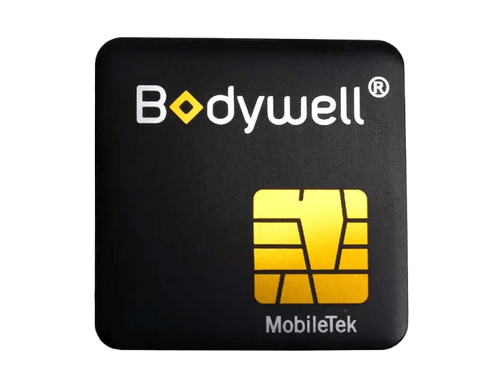
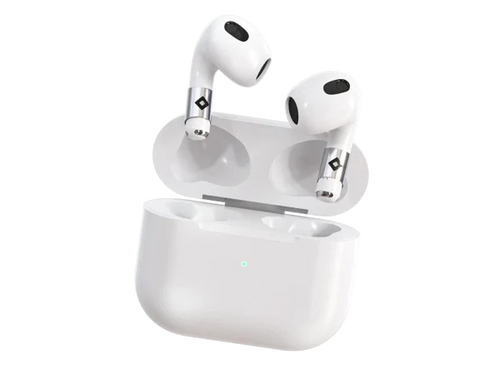
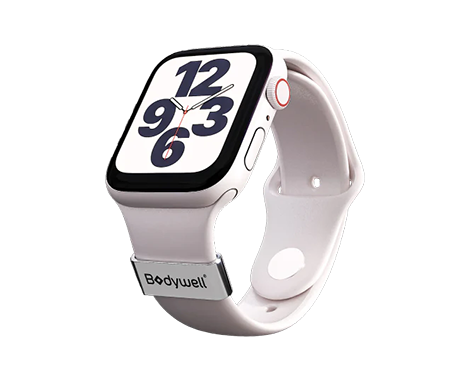







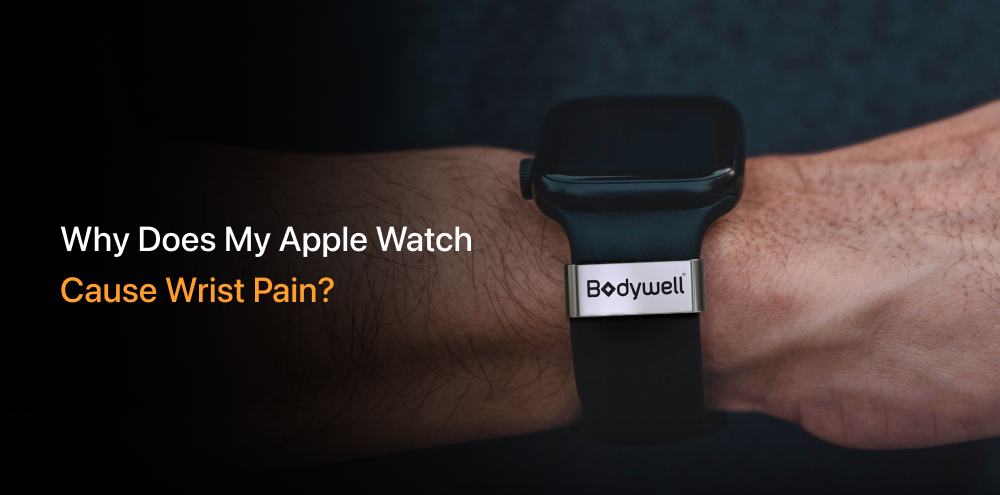

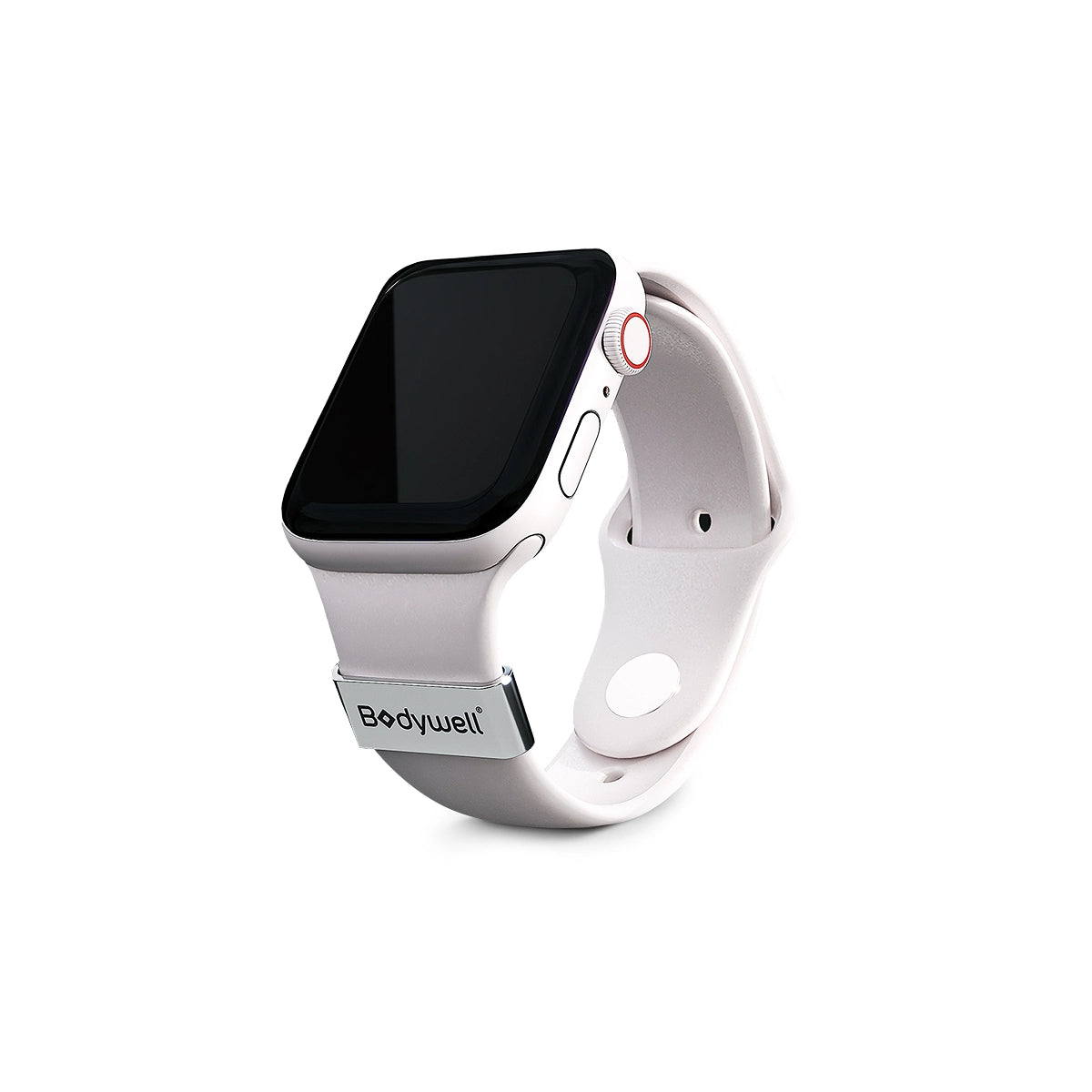
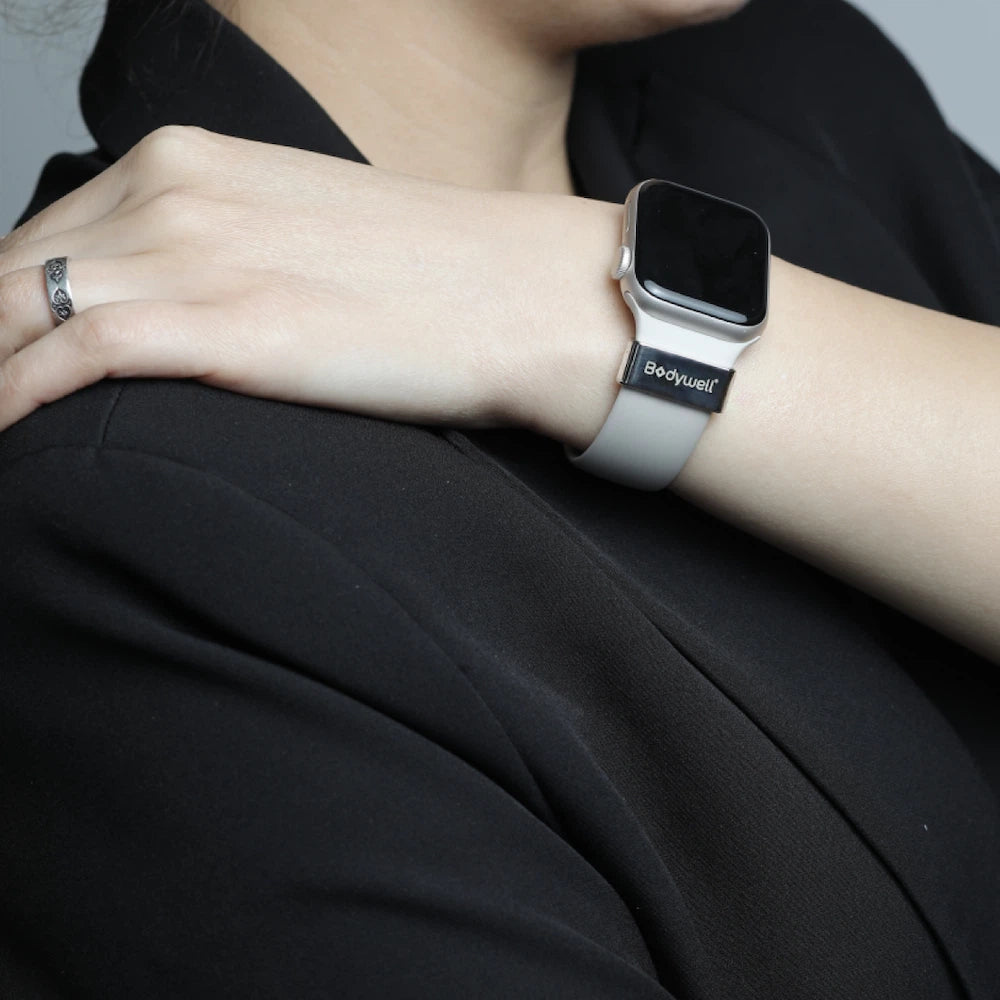


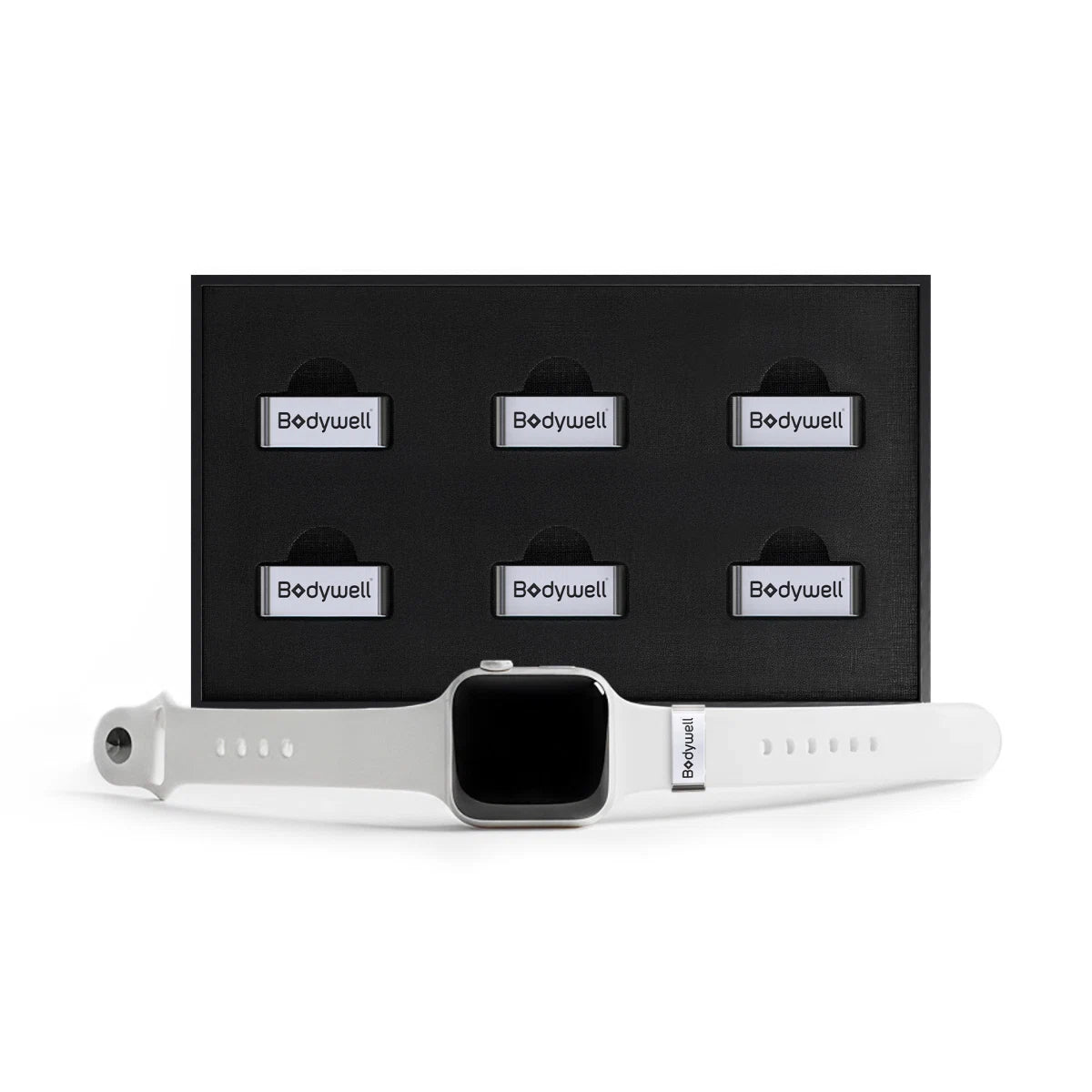



Leave a comment
This site is protected by hCaptcha and the hCaptcha Privacy Policy and Terms of Service apply.